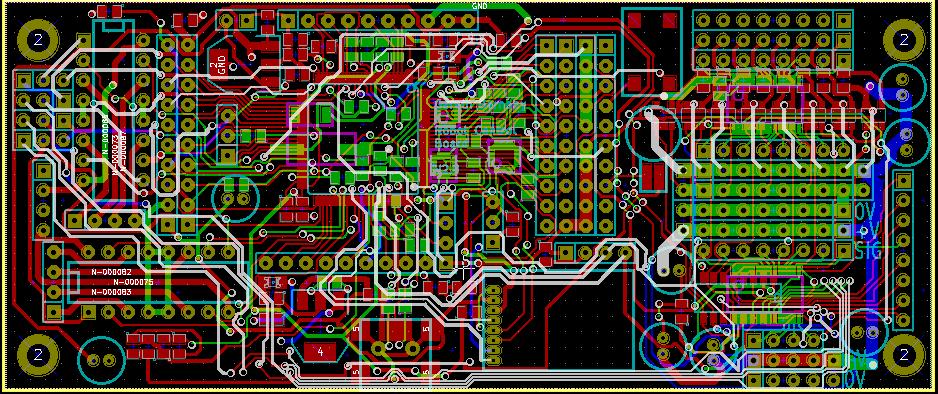This project aims to create an all-in-one robot control board. Unlike the arduino platforms, this board will contain servo drivers, motor drivers, accelerometer, gyroscope, compass, radio module, general purpoes I/O, and on-board power regulators on one single board.
The main micro-controller is an 32bit arm processor STM32F40. Programs will be downloaded to it by micro-usb port. This has both 8MHz and 32.768KHz oscillaters.
The board will be able to control up to 28 servos. 8 servo outputs will have current sensors.
The board will be able to control up to 4 reversible motors. each one can either be controlled via the pwm servo controlers or the main microprocessor by switching a jumper.
the accelerometer gyroscope and compass are controlled using an I2C interface, and are located towards the center of the board.
There are power port outputs on the board for 5V, 3V3 and 0V.
There are 45 general purpose I/O pins. amongst these I/O pins, some can be used as SPI and I2C interfaces. There is a single dedicated I2C output with nessacarry pull-up resistors.
All outputs are connected using 0.1 inch SIL connectors.
The microcontroller is powered from a 3V3 source, so any inputs must not be raised to 5V as this will damage the pin. An external module being used can be adapted to have a 3V3 output by adding a pull down resistor to 0V on the modules output.
the size of the board is 12cm by 5 cm with 3mm mounting holes at 11cm and 4cm.









what extra things would people want on this kind of board? I have added all the things That were not done on the first prototype, but i need people's feedback as to what features will be wanted.
Thanks :)



 Having EVERYTHING on a single board ready to be used, would take a specialized project to actually make good use of everything. Defeating the purpose of a “general robot control board”. Beyond accel, gyro, motor driver, wireless RX/TX, and maybe an IR reciever, you are pushing the limits of what are usually built into “most” robots. More features than this and it quickly becomes too much of a specialized board to justify me getting one for each bot I build. Oddbot has put a lot of thought into this very idea with his
Having EVERYTHING on a single board ready to be used, would take a specialized project to actually make good use of everything. Defeating the purpose of a “general robot control board”. Beyond accel, gyro, motor driver, wireless RX/TX, and maybe an IR reciever, you are pushing the limits of what are usually built into “most” robots. More features than this and it quickly becomes too much of a specialized board to justify me getting one for each bot I build. Oddbot has put a lot of thought into this very idea with his 